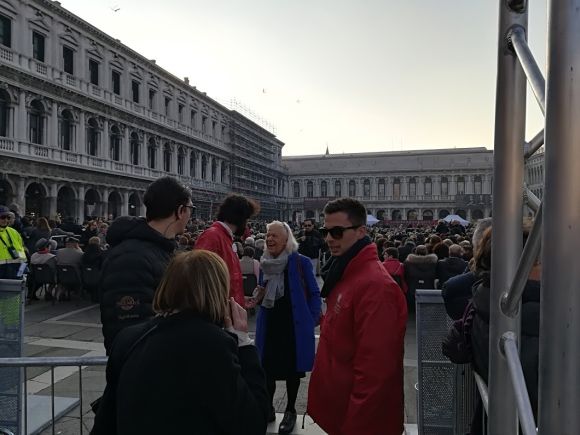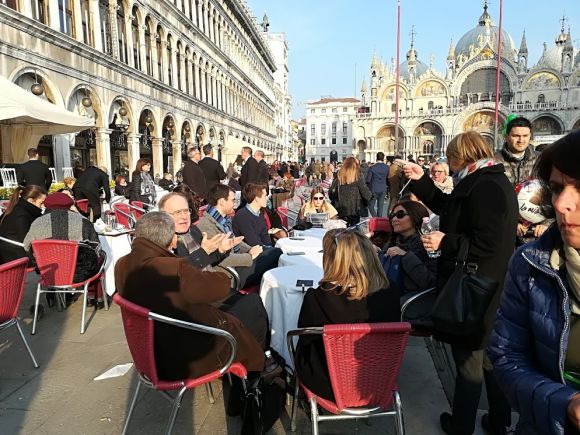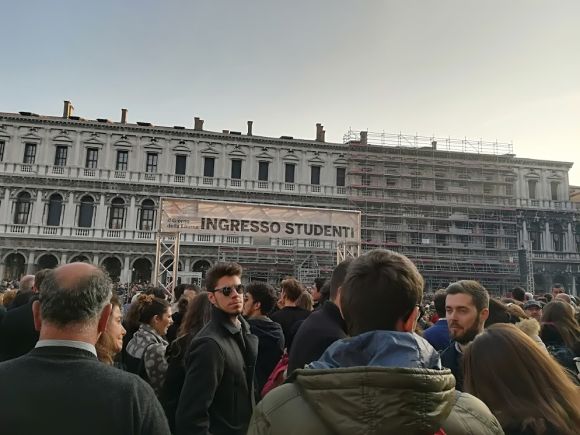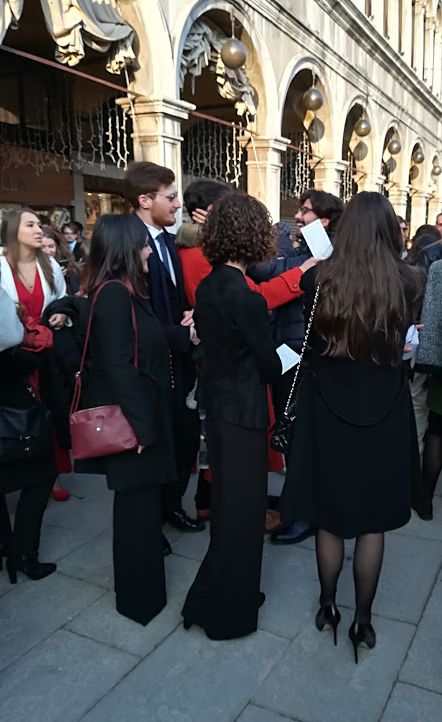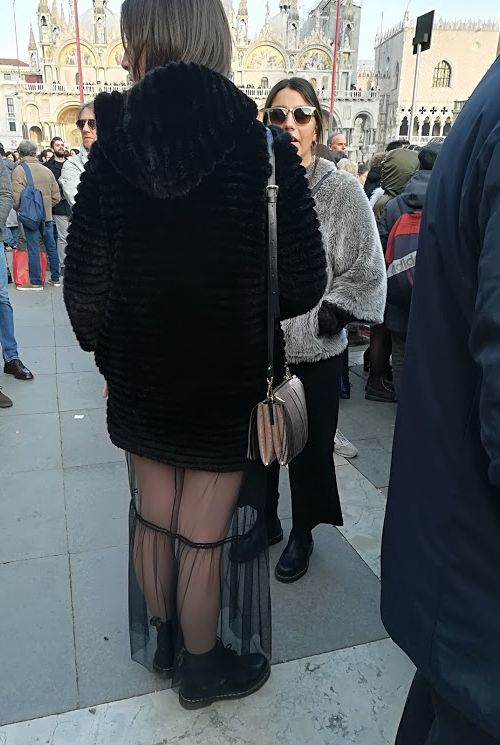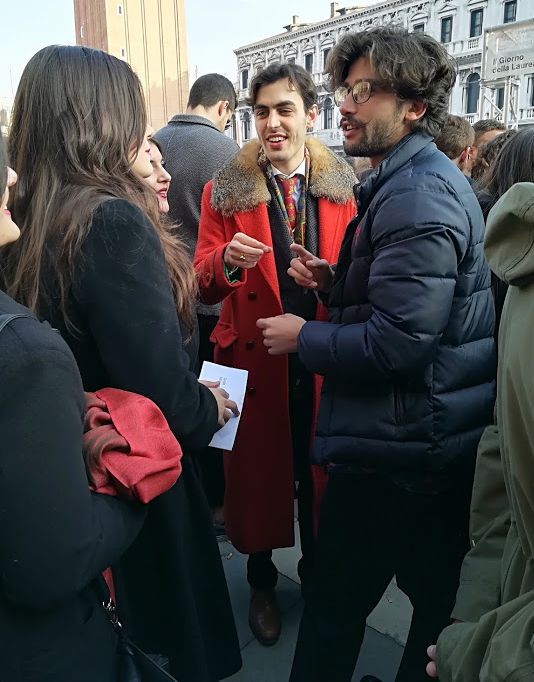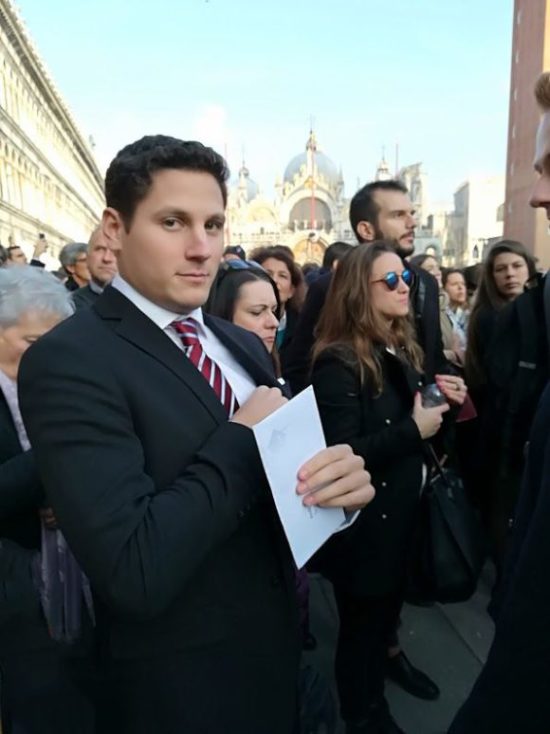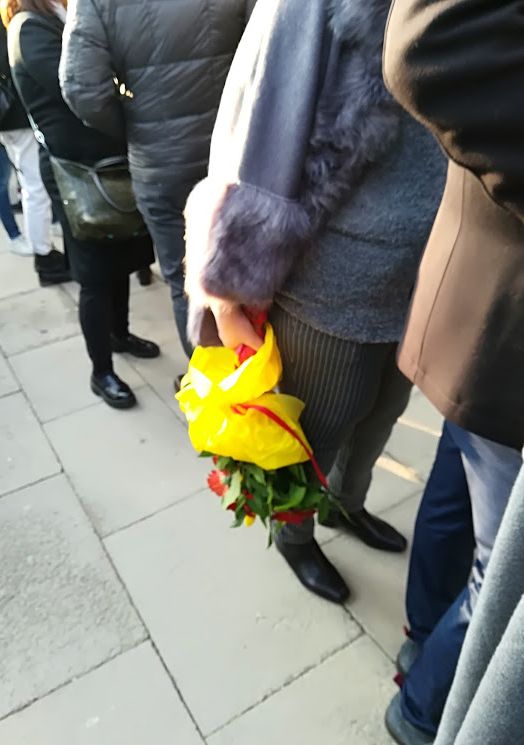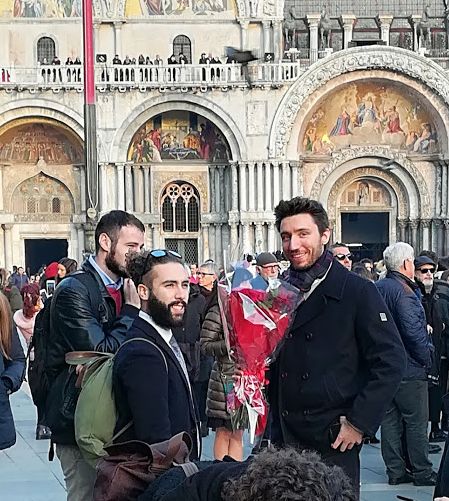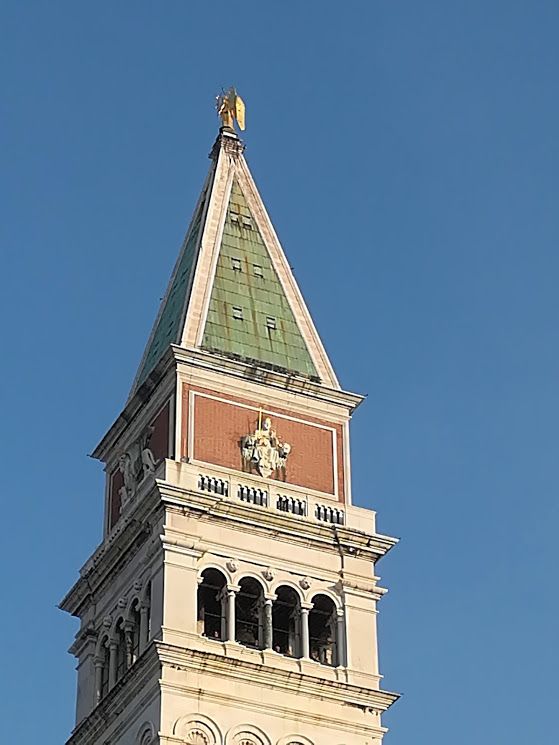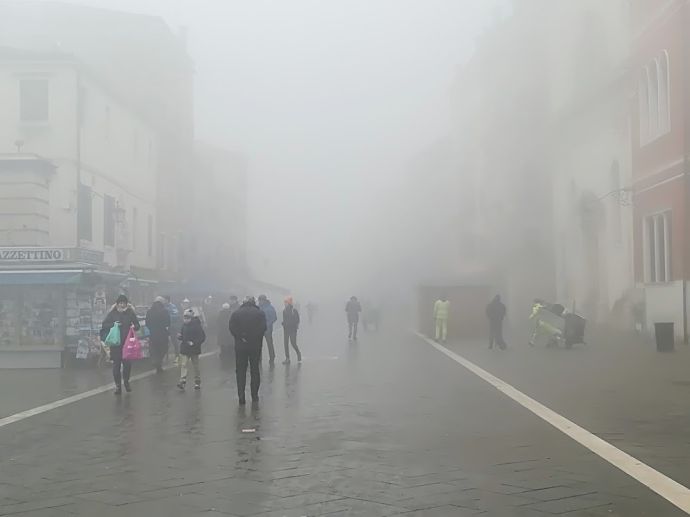
The year evidently began with a crunch for some unlucky person, as we discovered as our peregrination continued.
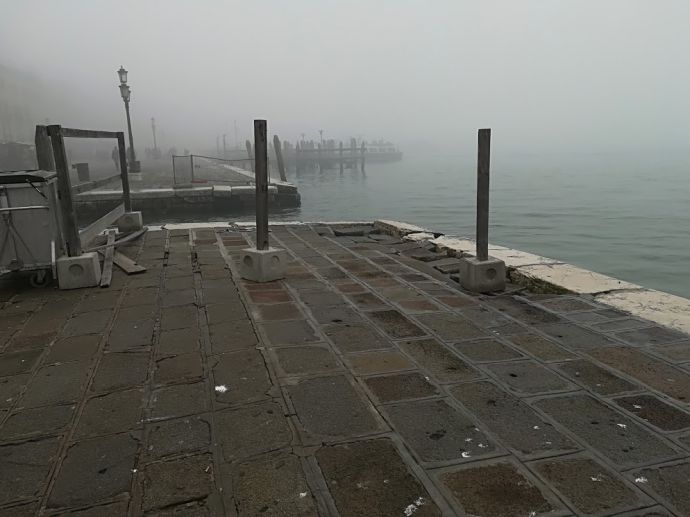
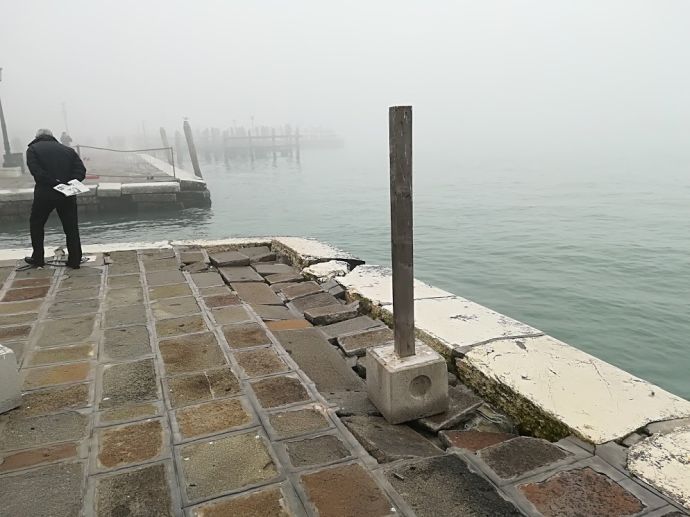
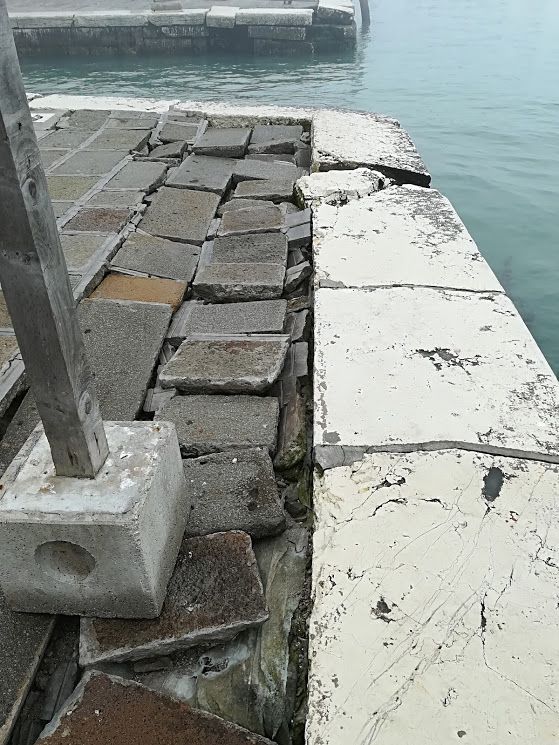
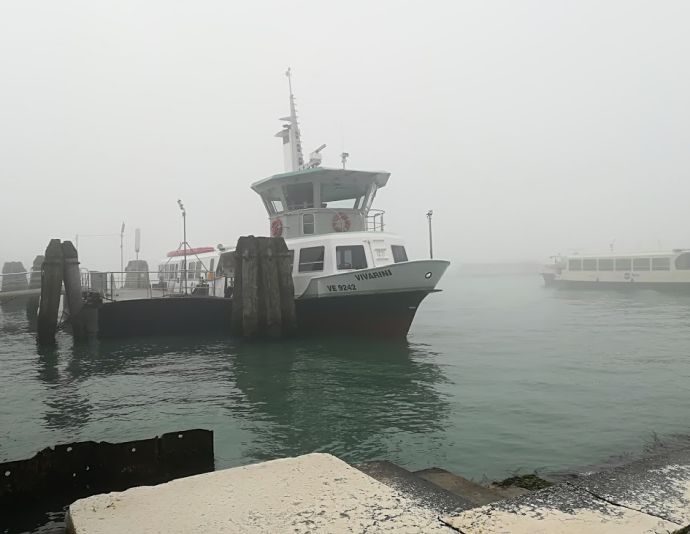

The year evidently began with a crunch for some unlucky person, as we discovered as our peregrination continued.




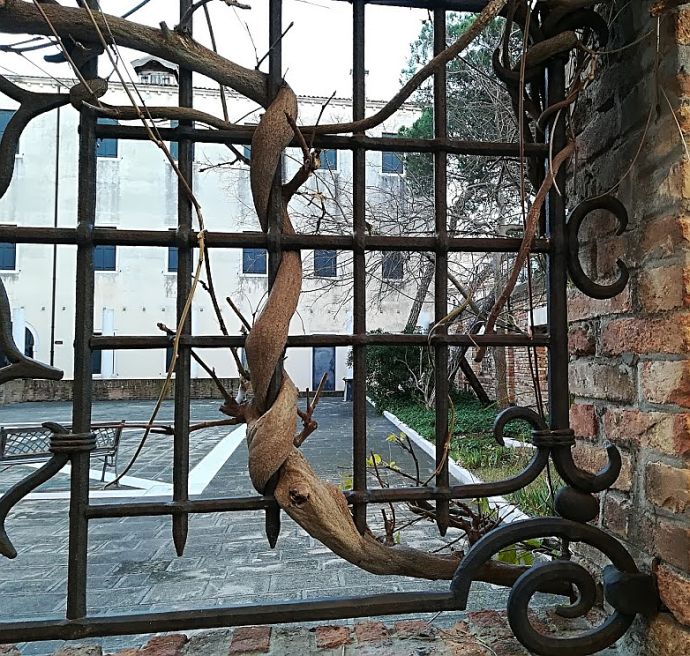
So there we were, standing around waiting for a friend on the Strada Nuova; you may know (or I will tell you now) that this street is almost always teeming with people surging toward San Marco from the train station and vice versa, with small tributaries feeding into the main flow. The crowds are usually quite a mix of locals and non.
I hadn’t paid any attention to a little old grey-haired man who had just walked past us; all I saw when Lino said “Oh look” was his back. He was chunky, sort of like a short Jackie Gleason, and walking at a slow but steady pace, his steps separated by less than the length of his foot. Not shuffling, exactly, but certainly not striding.
“He was a garbage man in my old neighborhood,” Lino reported, and was known far and wide as a collector-of-things-people-throw-out. “I gave him a Singer sewing machine once and he gave me a huge jug of wine.” Lino recognizes now that a few liters of cheap plonk were not exactly a fair trade for something which today might be worth a tiny fortune. And why did Lino have a sewing machine anyway?
It was booty from another of those famous enterprises undertaken by Lino’s brother-in-law, the angelic Sergio who never says no. One of Lino’s sisters worked in the office of a dentist; the dentist had a father who had worked all his life in the Arsenal. The father was moving and so Lino and Sergio were recruited to clear out all his stuff.
“So I got the Singer,” Lino went on, “and the old man also gave me a Venetian passo, and some crucibles for melting gold, and a little anvil, and some other things.” The passo was a treasure; it was folding metal measuring stick calibrated to the system of measurements used by the shipbuilders of the Venetian Republic. One Venetian passo corresponded to about five feet. The late Nedis Tramontin built 1000 gondolas using the Venetian passo, and when he died in 2005 it was buried with him, as he requested. Or at least that’s what they said at his funeral.
Of course Lino could see plenty of value in keeping the passo, but no point at all in keeping the Singer, so away it went. As, by now, had the retired garbage collector. That’s all there is to say about him?
“He was also the coach of the Italian national women’s volleyball team.”
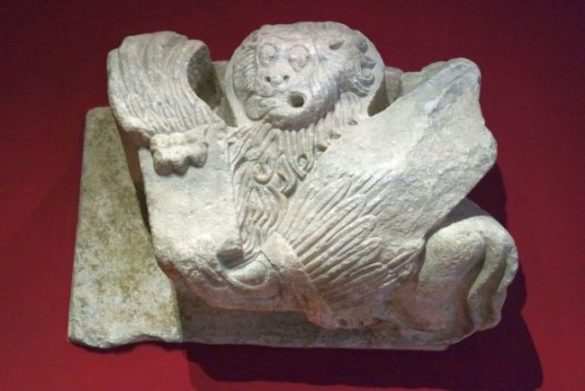
It doesn’t matter that New Year’s is my most unfavorite event in the year — it occurs every 365 days anyway. But I couldn’t let the year get packed away in the back of the closet along with everything else without showing I’m still very much alive, and looking forward to unpredictable wonders in 2018.
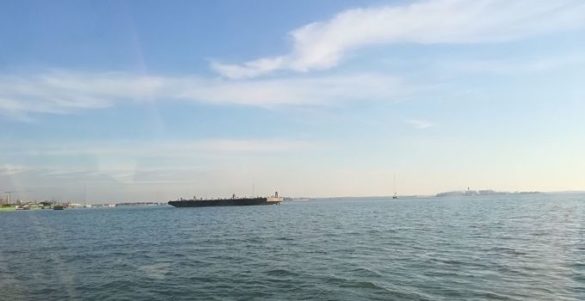
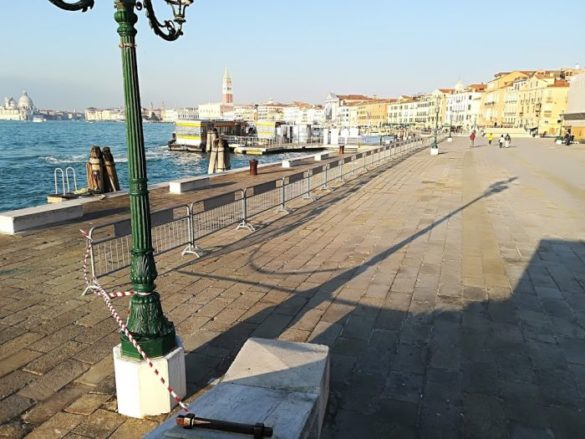
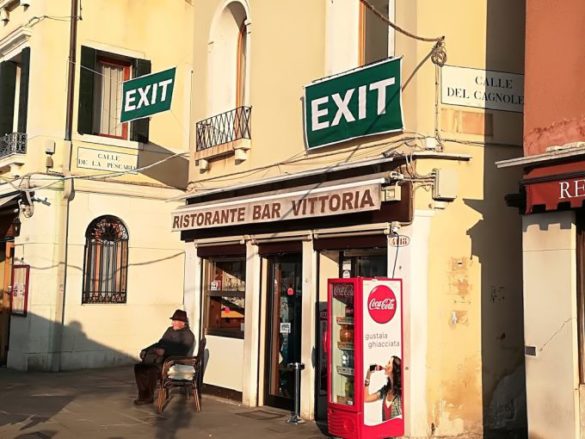

And in conclusion, Lino and I wish everyone a resounding “Saldi in pope!” A very profound and Venetian wish which means to stay firmly planted on the stern of your boat regardless of motondoso, gusts of wind, other boats cutting across your bow without warning in the dark, and whatever else may befall the hardy navigator. I could go on, but I think you have grasped my point.
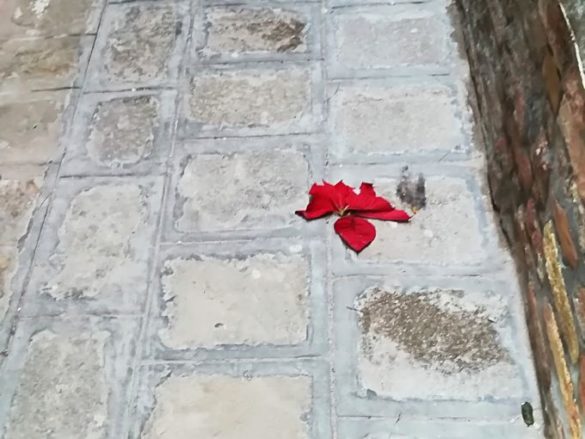

Two wonderful young women who have rowed with us over the past three years (when their studies would permit) graduated from Ca’ Foscari, the University of Venice, last Friday: The middle of the Piazza San Marco was awash in diplomas, theirs along with 1,122 other exuberant “doctors” of whatever their subject was.
This was the 20th year that a mass graduation ceremony has been held here for students from Venice and Treviso. The typical procedure, as we have seen in the case of some other friends, is that the candidate confronts a panel of professors and is interrogated on the subject of their thesis, nerve-wracking for the candidate and just wracking for the friends and family sitting behind him/her because there are no microphones. It’s like watching a closed-circuit television with the sound off, except you’re right there.
But for whatever administrative reason there may be, the November group was rounded up and given the graduation ceremony all’ americana, complete with mortarboards crowning their heads (though some received their more traditional laurel wreath afterwards). Clearly one reason why it was held in the piazza was because there isn’t anywhere else, except maybe the soccer stadium, that would hold three thousand people.
Anyone getting their degree is said to have received their laurea (LAOW-rey-ah). Or, as Toto’, the immortal Neapolitan comic, earnestly termed it in a film, their laura (LOW-ra), which cracks me up because that’s just Laura.
Apart from the amazing setting, the experience was Classic Graduation: There was confusion, emotion, and the boilerplate commencement address(es) focusing on their future and the need to continue to nurture their dreams and not to ever let the world beat them down. “Yours is not a point of arrival, but of departure,” said Paola Mar, councilor for Tourism representing the city administration. “Be passionately curious and ask yourselves every day the ‘why’ of things. Curiosity can guide you into new paths.” There was praise for their perseverance and their talents and collective hopes for whatever comes next in their lives. I have no idea how a graduation can be considered official without the majestic soundtrack of “Pomp and Circumstance,” or at least the Triumphal March from Aida, but graduate they did.
I have no pictures of our friends together because I never saw them, being on the outside of the sacred enclosure where parents and close relatives were huddled, shivering as the sun slid behind the Ala Napoleonica. Everyone was listening to the names as they were called — the list was so long that the university divided it into half at the letter “M,” and called out the names in pairs. Happily for me, Marta and Camilla’s last names begin with “C” and “D,” so I went home (by now I was shivering too) as soon as I heard them called. I missed seeing the jubilant thousand fling their mortarboards into the air, so no photo of the peak moment. I’m happy enough just to be warm and imagine it.

